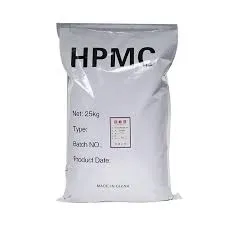
Okt . 13, 2024 23:15 Back to list
what is hpmc
What is HPMC?
Hydroxypropyl Methylcellulose (HPMC) is a semi-synthetic polymer widely recognized for its versatile applications in various industries, particularly in pharmaceuticals, food, and construction. It is derived from cellulose, a natural polymer found in plant cell walls, through a modification process that introduces hydroxypropyl and methyl groups into its structure. This modification enhances the solubility, stability, and performance characteristics of cellulose, making HPMC a preferred choice in several applications.
Properties of HPMC
HPMC is known for its unique physicochemical properties. It is non-toxic and biocompatible, making it particularly valuable in the pharmaceutical industry. As a common excipient, HPMC serves multiple functions, including acting as a binder, film-forming agent, and stabilizer in drug formulations. Its ability to control the release of active ingredients from tablets or capsules is a critical feature that enhances therapeutic efficacy.
In addition to its pharmaceutical use, HPMC exhibits excellent water-retention properties, which contribute to its application in construction materials such as mortar and cement. It helps improve the workability of the mixtures while also extending the setting time, which is crucial for ensuring a thorough cure and bond in construction applications.
Applications of HPMC
1. Pharmaceuticals HPMC is extensively used as a binder in tablet formulations and as a thickening agent in liquid medications. Its controlled-release properties enable the development of extended-release formulations, improving patient compliance by reducing the frequency of dosage.
what is hpmc

2. Food Industry In food processing, HPMC acts as a thickening agent, emulsifier, and stabilizer. It is commonly found in a variety of products, including sauces, dressings, and baked goods. HPMC can improve texture and mouthfeel while keeping food products moist without altering their flavor or appearance.
3. Cosmetics The cosmetic industry utilizes HPMC for its thickening and film-forming properties. It is a common ingredient in lotions, creams, and gels, contributing to their consistency and stability.
4. Construction In construction, HPMC is used in a range of applications, including tile adhesives, plasters, and other cement-based products. It enhances workability, water retention, and adhesion, making it an essential additive in modern building materials.
5. Other Applications Beyond these primary uses, HPMC finds applications in diverse areas such as agriculture (as a soil conditioner and in seed coatings), paper manufacturing, and even in the production of biodegradable films for packaging.
Conclusion
HPMC's versatility and functionality make it an indispensable component in various industries. Its unique properties allow it to improve formulations and enhance product performance, addressing the needs of manufacturers and consumers alike. As industries continue to demand higher-quality products with specific performance attributes, the importance of HPMC is likely to grow. Ongoing research and development efforts will undoubtedly explore new applications and improve existing formulations, ensuring HPMC remains a vital ingredient across numerous sectors. Whether in a tablet, a sauce, or a building material, Hydroxypropyl Methylcellulose plays a significant role in enhancing everyday products and improving quality of life.
-
The Widespread Application of Redispersible Powder in Construction and Building Materials
NewsMay.16,2025
-
The Widespread Application of Hpmc in the Detergent Industry
NewsMay.16,2025
-
The Main Applications of Hydroxyethyl Cellulose in Paints and Coatings
NewsMay.16,2025
-
Mortar Bonding Agent: the Key to Enhancing the Adhesion Between New and Old Mortar Layers and Between Mortar and Different Substrates
NewsMay.16,2025
-
HPMC: Application as a thickener and excipient
NewsMay.16,2025
-
Hec Cellulose Cellulose: Multi functional dispersants and high-efficiency thickeners
NewsMay.16,2025







